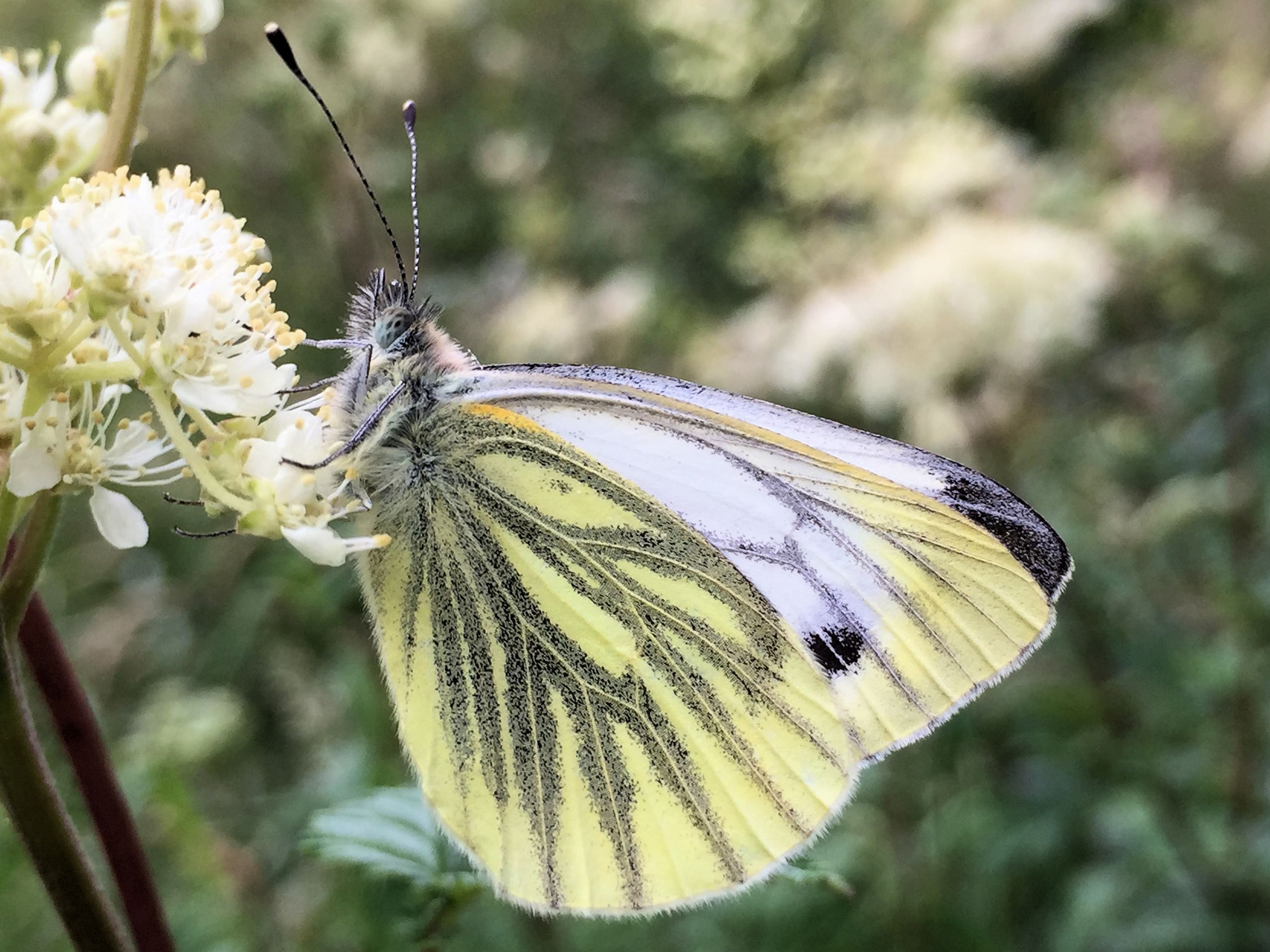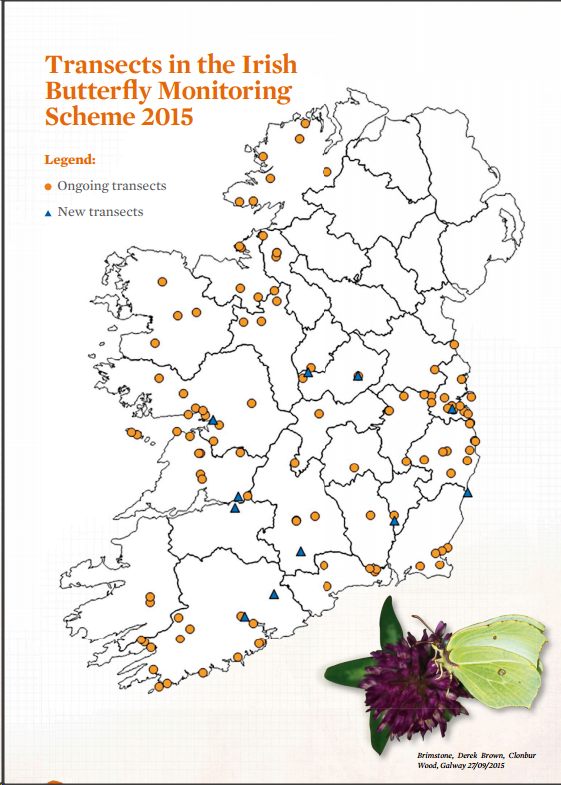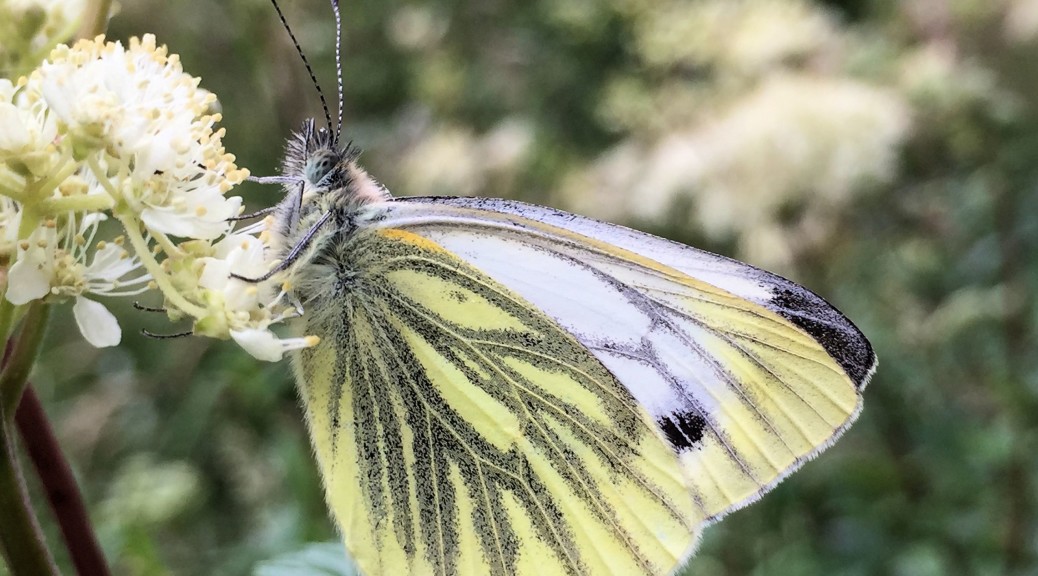
I am generally enchanted by butterflies, but I have to admit, the green-veined white is one species that holds little fascination for me. It is a very common species, flying from early April until October, with numbers peaking in May and August coinciding with its two generations. It can also be encountered in all habitats across the country as it is rather undiscerning as to its larval food plant; seems like any crucifer will do. In flight, it is almost inseparable from the small white, so one needs to wait for it to alight to confirm its identification. Inspection of its closed wings reveals raised veins, accentuate by darker lines running along the veins, a pattern found in none of the other white butterflies.
I know I should not be so dismissive of this humble creature, for we need common and widespread species to make it easier for us to monitor the plight of butterfly populations in the Irish countryside ( as well, of course, of cherishing all creatures equally). Since 2007 the Irish Butterfly Monitoring Scheme has a band of volunteer recorders who each week, from 1 April to 30 September, walk a fixed route (or transect) counting all the butterflies seen. Thanks to their efforts, data from 120 transects can be compiled by the National Biodiversity Data Centre and used to show categorically, which years were good for butterflies and which years were not, and over time to separate between-year variation from long term population trends. Even with this really dedicated band of volunteers, we can only monitoring the species that occur in more than 25 of the sites annually; at present this is only possible for 16 of Ireland’s butterfly species, one of which is the green-veined white. At least it meant that getting a photograph proved little of a challenge!

It is interesting to use the results of the Irish Butterfly Monitoring Scheme to calibrate one’s own subjective assessments with the reality, or at least the reality as seen through the lense of a statistician. I am convinced that the green-veined white is the commonest and most abundant butterfly species in Ireland, but figures don’t bear that out. Green-veined white is only the fourth most widespread species after speckled wood, small tortoiseshell and peacock. And it terms of the number of individuals, more meadow brown, ringlet and speckled wood butterflies are seen each year than green-veined white. And for all my complacency, it is surprising to find that those clever statisticians can show (with a 99% level of confidence no less!), that the population of the green-veined white in Ireland has suffered a moderate decline since 2008. Just think about that for a minute – what is this telling us about the state of the Irish countryside? This is a question upon which I’d prefer not to ponder for too long…
Speckled wood #1, Dingy skipper #2, Wall brown #3, Common blue #4, Holly blue #5, Small blue #6, Meadow brown #7, Ringlet #8, Wood white #9, Cryptic wood white #10, Orange-tip #11 & Green-veined white #12.

